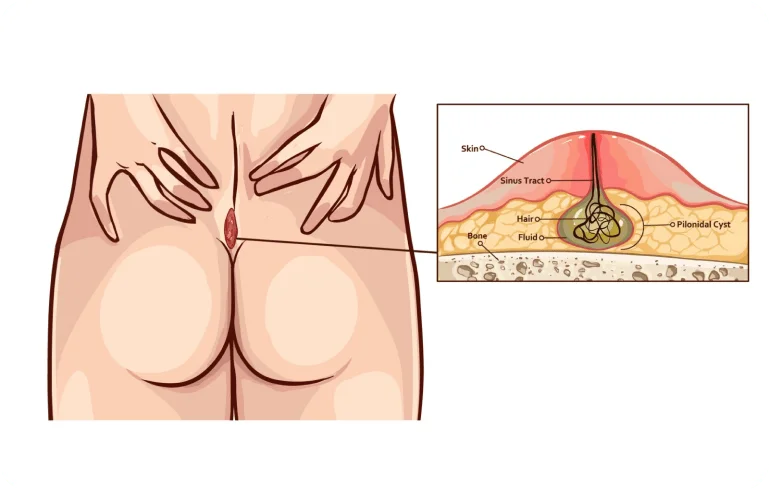Looking For Safe, Painless And Quick Treatment for Piles?
Doppler Guided Hemorrhoid Artery Ligation (DGHAL) in Navi Mumbai
- Dr Nitish Jhawar, with 23 years of experience

Book An Appointment
What is Doppler Guided Haemorrhoid Artery Ligation (DGHAL)?
Doppler Guided Hemorrhoid Artery Ligation (DGHAL) is an advanced, minimally invasive procedure designed to treat haemorrhoids (piles) effectively and painlessly.
Unlike traditional surgical methods, DGHAL precisely targets the arteries supplying blood to the hemorrhoidal tissues, significantly reducing post-procedure discomfort and promoting quicker recovery.
This technique is increasingly favoured by both patients and colorectal specialists due to its combination of safety, efficacy, and convenience.
DGHAL is virtually painless, requires only mild sedation, and minimizes the need for extended hospital stays, making it an ideal choice for patients seeking effective, convenient relief without the discomfort of invasive procedures.
What is DGHAL
Doppler Guided Hemorrhoid Artery Ligation (DGHAL) is a cutting-edge, minimally invasive treatment designed specifically for patients suffering from haemorrhoids, commonly known as piles.
This advanced procedure uses Doppler ultrasound technology to locate the arteries supplying blood to hemorrhoidal tissues accurately.
Once identified, these arteries are gently tied off, or ligated, to restrict blood flow to the affected area. This lack of blood flow causes the hemorrhoidal tissues to shrink naturally, providing relief without invasive surgery or extensive recovery time.
DGHAL is especially valued for its high precision, minimizing the risk of trauma to surrounding tissues and offering a significantly lower discomfort level compared to traditional haemorrhoid treatments.
Ideal Candidates for DGHAL
DGHAL is particularly beneficial for:
- Patients with bowel incontinence who may be at risk with traditional haemorrhoid surgery.
- Individuals who prefer a minimally invasive, painless option over conventional, more invasive procedures.
- Patients looking to avoid the extended recovery periods and pain associated with traditional hemorrhoidectomy.
How does Dr. Nitish Perform DGHAL& DGHAL-RAR for Piles in Navi Mumbai?
Doppler-guided haemorrhoid Artery Ligation (DGHAL) is a refined, step-by-step procedure designed to target haemorrhoid/piles arteries precisely, minimizing discomfort and promoting rapid recovery. Here’s an outline of how this advanced procedure is performed:
Step-by-Step Procedure
Preparation
Patients undergo a bowel cleansing with fleet enemas a few minutes before the procedure to ensure optimal visibility and access. This preparation helps to clear the rectum, creating a clean field for the treatment.
Anesthesia
For a comfortable and pain-free experience, patients receive intravenous sedation using Propofol, a fast-acting sedative that allows relaxation without deep anaesthesia. Local anaesthesia is also applied around the rectum to numb the treatment area, ensuring minimal discomfort during the procedure.
Procedure
The specialist carefully inserts a proctoscope with a rotatable needle equipped with Doppler ultrasound technology into the rectum. This device helps locate the haemorrhoid arteries, which supply blood to the affected tissues. Once identified, these arteries are gently tied off (ligated) using precise stitches, effectively reducing blood flow to the hemorrhoidal tissues.
Outcome
By cutting off the blood supply to the haemorrhoids, the affected tissues shrink and eventually slough off. Reducing blood flow also helps the rectal tissue heal and minimizes the risk of recurrence. This minimally invasive approach ensures a comfortable, highly effective treatment with minimal downtime for the patient.
DGHAL’s targeted, efficient procedure allows most patients to experience significant relief, often with minimal postoperative discomfort.
Benefits of DGHAL
DGHAL offers targeted, minimally invasive treatment with the following advantages:
- Precision: Accurately targets hemorrhoidal arteries.
- Comfort: Minimal pain and discomfort.
- Anesthesia: No general anaesthesia needed; only mild sedation.
- Hospital Stay: Short stay, with discharge shortly after sedation.
- Quick Recovery: Resume daily activities within 1-2 days.
- Safety: Low risk of complications.
- Satisfaction: High success and patient satisfaction rates.
Frequently Asked Questions (FAQs)
Typically, DGHAL takes about 20-30 minutes, allowing for a quick and efficient treatment.
Most patients can resume daily activities within 1-2 days, thanks to the minimal recovery time.
Patients are generally advised to avoid heavy lifting for a few days but can otherwise continue normal activities soon after.
DGHAL is effective for most types but may not be suitable for advanced cases requiring different approaches. Consult your specialist to determine if it’s right for you.
DGHAL offers a painless, minimally invasive option with shorter recovery, no general anaesthesia, and fewer complications compared to traditional surgery.
